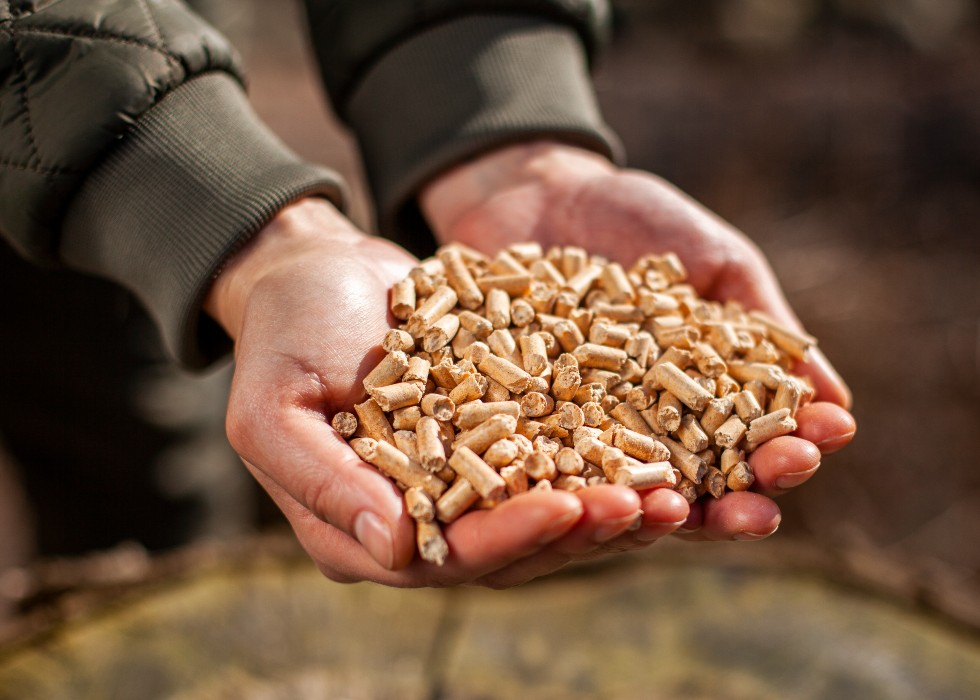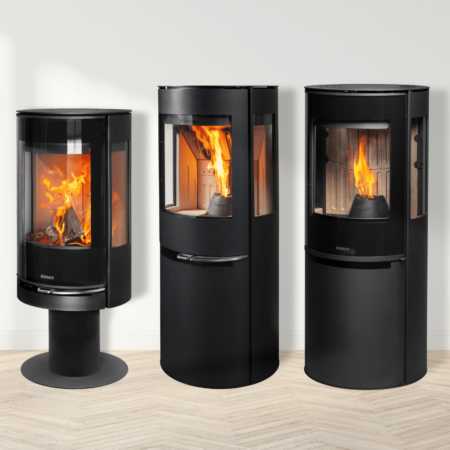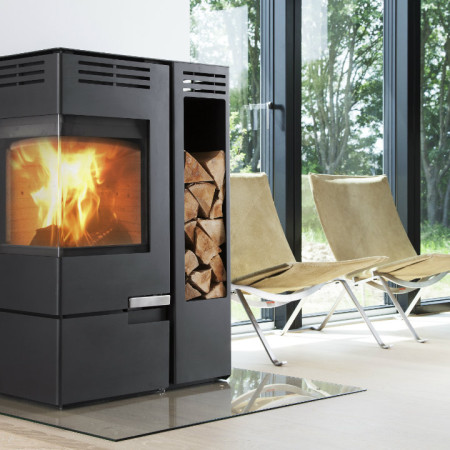How are wood pellets are made?
Wood pellets are made of compressed wood chips and sawdust. Before the wood is being pressed to pellets, it is heated to 70 degrees. At this temperature, the wood releases lignin, which is a kind of natural glue, that glues the wood together, when it’s being pressed to pellets afterwards. In other words, wood pellets solely consist of natural materials, unless another binding agent is added, or if the pellets are glazed with oil to make them dust free.
What type of wood pellets is best?
It is important that you choose the right type of wood pellets, since the quality of the pellets directly influences the efficiency, the noise level, and the cleaning interval of the stove.
Wood pellets can be made of any wood species, but are most common in spruce, pinewood, and oak – which are all bright wood species. Most people experience, that brighter wood pellets burn more efficient than darker wood pellets. Dark wood pellets also tend to have a negative impact on the noise level.
Here are some guidelines for good wood pellets:
- They are bright
- They are wood colored
- They are dry
- They are 6 mm in diameter – these have the highest heating value and fit all stoves
- They have as little additives as possible (preferably none)
- They leave behind very little slag
- They are quality tested by an authorized test firm
- They have one or both of following endorsements: ENplus quality A1 and DINplus
Wood pellets also ensure a dry combustion. This reduces the release of flue gas, contrary to the combustion of wet wood.
Test the quality of your pellets at home
Here’s how to test your pellets at home.
1: Look at the pellets
They should be bright and with an even wood color. If the wood pellets have dark spots in them, it could be a sign, that they contain compressed bark, which does not burn well.
If you see colored spots like red or blue in the wood, it could be a sign, that the wood contains unnatural materials like paint, lamination, and such. In that case, the pellets could be harmful to combust. To avoid this, we recommend that you buy wood pellets that are endorsed with ENplus quality A1 or DINplus.
2: Feel the pellets
Are they moist? Then you shouldn’t burn them. Wood pellets should have a maximum humidity of 10%, which means, that they should feel dry, when you hold them in your hand.
3: Smell the pellets
The pellets should smell like wood – this also applies during combustion.
4: Test the possible content of additional binding agents
If you want to know whether your pellets contain additional binding agents, here’s how to test it: Put a couple of pellets in a glass of water. If they dissolve after a few minutes, it is most likely that they do not contain additional binding agents.
What are the advantages of firing with pellets?
There are many advantages of firing with pellets in a pellet stove: it makes the combustion easy, even and efficient.
If you pour your pellets into an open container a day in advance, they will vent a little CO. This minimises the risk of the stove triggering a CO alarm when you add new pellets.
By using wood pellets, you get the most out of the wood, because the combustion is slow and stable. You also get an even room temperature. Using wood pellets is the optimal way to burn, since you get as most heat as possible out of your wood, and as least smoke as possible out of your chimney.
All you need to do is buy the right pellets for your pellet stove and keep the pellet container full.
The average consumption of wood pellets
The consumption of pellets depends a lot on the heating level and the stove, you’re firing in. At a high heating level, you might burn a kilo wood pellets per hour – but again, that depends on the setting on the stove, the quality of the pellets, and which specific stove you are using. However, it’s a good idea to buy pellets in larger amounts – especially in peak season, where most people use their pellet stoves for many hours a day.
How to store wood pellets
The pellets should be stored in a dry place, where the humidity doesn’t exceed 10%. If you store your pellets in a humid place or an extremely cold place, it will affect their ability to burn. Ideally, you store your pellets indoors – for example in your depot or scullery.
To avoid the pellets from breaking and turning into sawdust, be careful when you handle the bags.
Furthermore, it’s a good idea to keep a smaller number of pellets close to the pellet stove ready to load the container. There’s a lot of stylish storage solutions for this purpose: for example, these firewood basket sets, which makes the filling a lot easier.
Source (in Danish): https://www.trae.dk/leksikon/traepiller/



